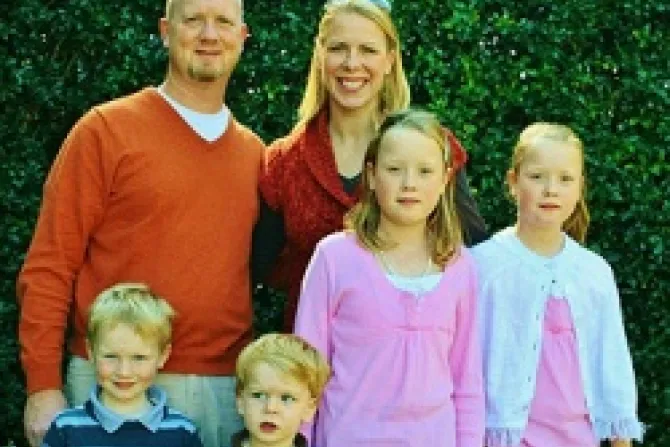Dallas, Texas, Jun 8, 2013 / 05:03 am
When her twin girls were born suddenly at only 26 weeks, Anne Ponton said doctors and nurses in her home town of Irving, Texas fought diligently for her babies' survival.
But the twins, born to Anne and her husband Jason in December 2001, "were the same size" as the babies murdered by late-term abortionist Kermit Gosnell.
Gosnell, who ran the Philadelphia-based Women's Medical Society clinic, was convicted on three first degree murder charges in May 2013 for killing babies born alive after botched abortions. During the trial, gruesome testimonies from facility workers – who described the procedures as akin to a "beheading" – garnered international media attention.
"They were doing everything in that clinic to kill the exact same size and viability" of babies such as "our girls," Ponton told CNA in a June 5 interview.
However, "where we were going...they were doing everything in their power to save their lives."
Ponton recalled how nearly twelve years ago, the first six months of her pregnancy with the twins went smoothly. Yet at 26 weeks, she remembers calling her doctor the next morning after a routine appointment about a slight concern she had noticed.
To her surprise, the doctor told her to get to the hospital right away.
By the time Ponton and her husband Jason arrived, nurses found that she was already in labor and that she was dilated seven centimeters. Medical staff on hand tried to stop labor, but were unable to.
It was at that moment that the doctor "just leaned over and whispered, 'Anne, if you are a woman of faith, pray. You're going to have these babies right now,'" Ponton said.
The girls were delivered via emergency Caesarean section, and immediately both were put on full life support, baptized and taken to a Neonatal Intensive Care Unit in Dallas.
"Each child had their own team of nurses and one doctor ready for them," she said.
One of the baby girls weighed only one pound, nine ounces and the other weighed one pound, thirteen ounces. Within a few days both babies were operated upon – one twin having heart surgery, the other hernia surgery.
At the intensive care unit, the twins were put into beds covered by "a plastic, transparent...bubble," meant to closely simulate the conditions of a mother's womb.
While her daughters were at the unit, Ponton would drive back and forth every day with her husband to see them. On the route, the two had to pass a late-term abortion clinic less than a mile from the hospital.
"What we're hoping is that people who are so quick to say yes, Gosnell is a monster, that they see that this act in and of itself, period – whether it's done in a clean clinic or a disgusting clinic – at 24 weeks or 12 weeks, it's still killing," Ponton said.
"I have never met or talked to a NICU doctor who would not argue that the babies that Gosnell was convicted of (killing) are of viability outside the womb and that they're human beings."
Ponton recalled that during their time at the hospital, as soon as the twins were healthy enough, doctors put the girls together in the same bed.
"It was amazing, because when one of the girls was having a really hard day, breathing, or not tolerating the feeding well because it was all through feeding tubes…(the nurses) would swaddle them very tightly together and whoever was having a hard day, after being swaddled with her sister, would thrive."
By the end of the first two weeks, while their eyes were still sealed shut, Ponton said the babies "could even recognize the voice of the doctor or the nurse coming who typically did the blood test every single day."
The babies began to equate the voice of the nurse who took their blood with pain and when they heard his voice coming down the hall, "their heart rate would immediately shoot up."
"So to me, that was just one more confirmation that these precious little children do feel pain as they do feel it in the womb," she said.
After four months at the hospital, both girls were able to come home at the same time without feeding tubes, an apnea monitor, oxygen, or medication.
It was documented as "one of the biggest success stories" in the history of the intensive care unit, Ponton said.
On her healthy, nearly-12-year-old daughters today, Ponton reflected that "we have the proof – we have the fruit, of what it looks like to say yes to life."
"Our girls are that voice and that face" for what "life looks like when given the chance," she said.
"That's our hope for sharing our story, is that people will just come to understand the dignity of all human life, in all its stages."



